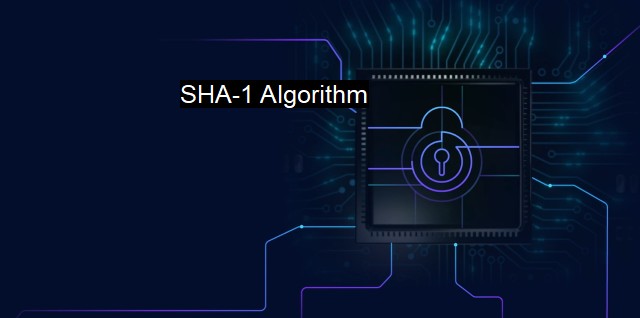What is SHA-1 Algorithm?
Understanding the SHA-1 Algorithm: A Crucial Element of Cybersecurity in the Digital Age
The Secure Hash Algorithm 1, or SHA-1, is a cryptographic hash function that was developed by the National Institute of Standards and Technology (NIST) and released by the National Security Agency (NSA) in 1995. It is an integral part of numerous widely employed security applications and protocols, including TLS and SSL, PGP, SSH, and IPsec. Its primary function is to ensure data integrity and verification.SHA-1 generates a unique 160-bit (20-byte) hash value known as a message digest for a given input (message). The input data can vary in size, but the output hash value size remains constant. To illustrate, whether you have a 1 KB text file or a 4 GB movie file, when the data run through the SHA-1 process, it results in a singular 20-byte hash. This hash is unique to the specific input and even a small modification in the original data generates a completely different output hash.
SHA-1 operates on blocks of data, bound by constraints that are a power of 2. Specifically, typical block sizes are 512-bits. In the operation phase, it utilizes bitwise processing, logical functions, modular arithmetic, and loop structures to manipulate and transform the input data into the fixed output size hash.
The underpinning security of SHA-1 is based on the difficulty of deriving the original input data from the output hash, a trait known as pre-image resistance, and the property that no two different inputs should yield the same output hash, i.e., it should be free from collision. Until these properties can be defeated, the original data remain secure as it’s virtually impossible to decipher.
One of the primary applications of SHA-1 has been within the realm of SSL certificates where it has been utilized to ensure the integrity of transmitted data. When utilized correctly, SHA-1 would create a hash of the information involved within an SSL certificate, the original hash would then be sent along with the certificate. Upon receiving these files, the client or receiver could then create their own hash of the certificate information and compare this with the original hash. If both hashes were the same then the integrity is intact but any discrepancies would indicate foul play.
By 2005 vulnerabilities started surfacing. Researchers discovered theoretical collisions, which meant two different inputs could produce the same SHA-1 hash. While no practical collisions were promptly discovered, it was a wake-up call and signaled towards a potential compromise in data security. Fast forward to 2017, Google, along with CWI Institute, announced the first SHA-1 collision — the event reaffirmed the need to transition away from SHA-1 to a more secure hashing function.
Responding to these cracks in the security armor of SHA-1, NIST officially deprecated use of SHA-1 in 2011, and by 2020 most browsers and organizations have discontinued its implementation. The focus has now shifted to more secure alternatives like SHA-256 and SHA-3 that does an even more commanding job at maintaining the integrity and security of data by generating longer, and hence computationally much safer, hash values.
While SHA-1 was a pioneering component of modern cybersecurity systems and served as a reliable algorithm in the past, the industry advances require institutions to stay steps ahead of potential vulnerabilities. Consequently, its modern iterations and replacements promise to deliver a more robust platform for ensuring information integrity and secure communications on the internet.

SHA-1 Algorithm FAQs
What is the SHA-1 algorithm?
The SHA-1 algorithm is a cryptographic hash function that generates a fixed-length 160-bit hash value. It is widely used in cybersecurity and antivirus software to ensure data integrity and authenticity.Is SHA-1 still secure for use in cybersecurity?
No, SHA-1 is no longer considered secure for use in cybersecurity due to its vulnerability to collision attacks, in which two different data inputs can produce the same hash value. It is recommended to transition to more secure hash functions like SHA-2 or SHA-3.What is the difference between SHA-1 and SHA-2?
The main difference between SHA-1 and SHA-2 is the length of the hash value they generate. SHA-1 generates a 160-bit hash value while SHA-2 generates hash values of 224, 256, 384, or 512 bits. Additionally, SHA-2 is considered more secure than SHA-1 and is recommended for use in cybersecurity applications.Can antivirus software detect SHA-1 hash values?
Yes, antivirus software can detect SHA-1 hash values as part of their malware detection and prevention functions. By comparing the SHA-1 hash values of files on a computer to a database of known malicious hashes, antivirus software can identify and remove malware from the system.| | A | | | B | | | C | | | D | | | E | | | F | | | G | | | H | | | I | | | J | | | K | | | L | | | M | |
| | N | | | O | | | P | | | Q | | | R | | | S | | | T | | | U | | | V | | | W | | | X | | | Y | | | Z | |
| | 1 | | | 2 | | | 3 | | | 4 | | | 7 | | | 8 | | |||||||